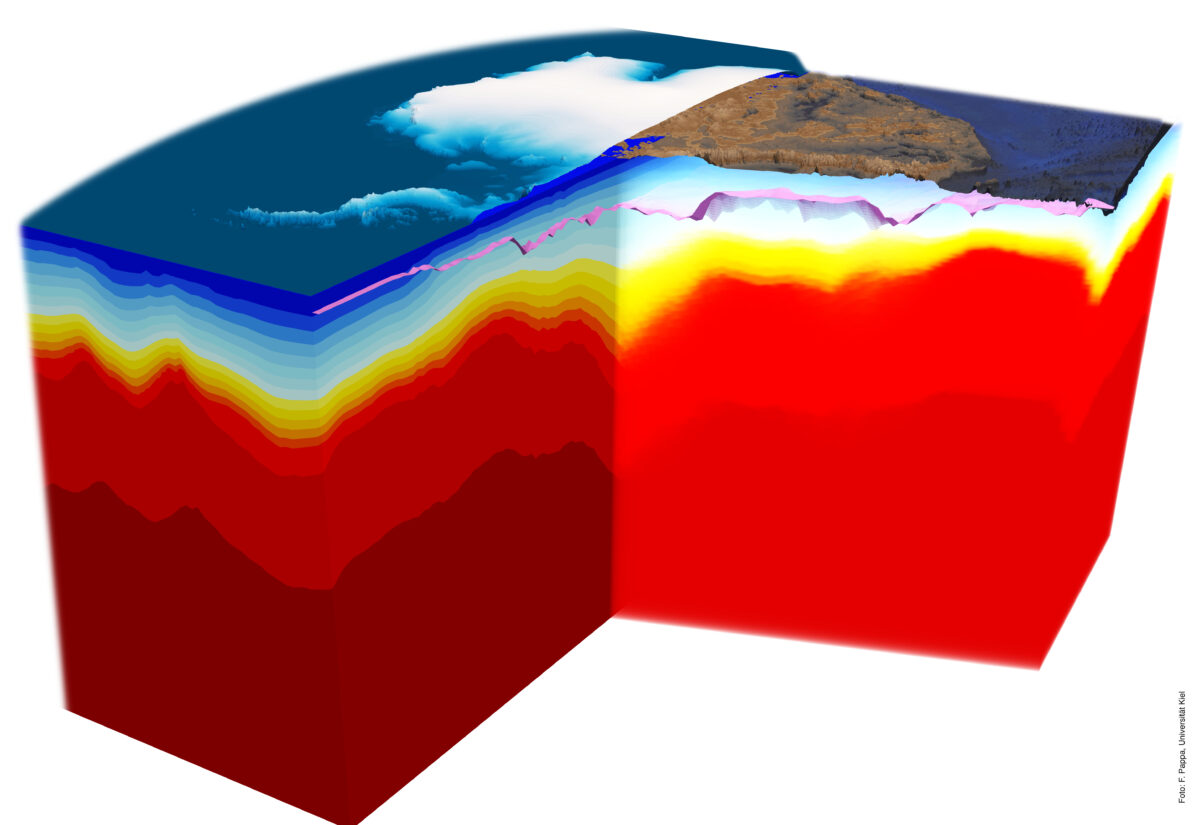Polar research in the Satellite and Aerogeophysics group at the Institute of Geosciences at Kiel University
The geology beneath the ice sheets in Greenland and Antarctica is still not well understood. A better understanding of the interactions between solid Earth and ice sheets is particularly important in these areas, which are strongly affected by climate change. Knowledge about the thickness of the Earth’s crust, for example, is crucial for estimating the heat flux from the Earth’s interior. This determines the melting rates at the base of the ice sheet and thus the flow rates of the glaciers.
The available geophysical information from satellite observations, airborne measurements, geological and seismological models are used by us using statistical methods to characterize the geological structure under the ice. The comparison with neighbouring continents also serves to improve the results. Such models can lead to a better understanding of the interactions between the solid earth and ice sheets.
Research questions
- How can we better map the geology beneath the ice?
- What can we learn about Antarctic geology from Antarctica’s geological neighbours?
- How much does the heat flow vary in Polar regions?
- What role do geological processes play in the changes in the ice sheets that can be observed today?
Methods
- Processing and Interpretation of satellite and aerogeophysical data with inversion and forward modelling
- Application of machine learning methods for predictions in areas with little data coverage
- Modelling of the structure of the lithosphere
Responsible persons
Prof. Dr. Jörg Ebbing, Institute of Geosciences, Kiel University
Projects we participate in
Reconciling Solid Earth and Ice Sheet Temperature Estimates for Greenland
3D Earth – A Dynamic Living Planet – Support to Science Element of ESA
Modelling of the structure of the lithosphere in Greenland and Antarctica
GOCE4Antarctica – Support to Science Element of ESA
Exploitation of data of the GOCE-satellite mission to study the lithosphere of Antarctica
4D Greenland- Support to Science Element of ESA
Combination of ice temperature models of the SMOS-satellite mission with geophysical models of the Solid Earth
SPP Antarktisforschung (SPP 1158) – Antarctic Heat 2
Inversion of geophysical data for estimating geothermal heat flow in Antarctica
GreenCrust (DFG)
Geophysical inversion to determine the crustal structure of Greenland under the ice and evaluate it in terms of geothermal heat
